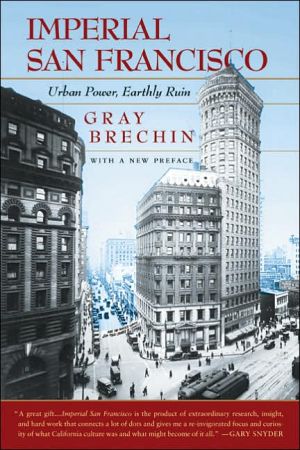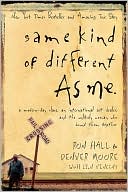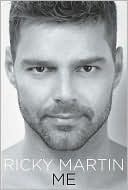Imperial San Francisco: Urban Power, Earthly Ruin
"A classic of urban history, environmental history, California history, and socially oriented architectural criticism, this work contains scholarship that is thrilling in its comprehensiveness. Never before have the inner dynamics of the regional civilization centered in San Francisco been so comprehensively integrated."-Dr. Kevin Starr, State Librarian of California, author of Americans and the California Dream \ "Imperial San Francisco is a great gift of a book, the product of extraordinary...
Search in google:
"A classic of urban history, environmental history, California history, and socially oriented architectural criticism, this work contains scholarship that is thrilling in its comprehensiveness. Never before have the inner dynamics of the regional civilization centered in San Francisco been so comprehensively integrated."—Dr. Kevin Starr, State Librarian of California, author of Americans and the California Dream "Imperial San Francisco is a great gift of a book, the product of extraordinary research, insight, and hard work that connects a lot of dots and gives me a reinvigorated focus and curiosity [about] what California culture was and what might become of it all."—Gary Snyder Oregonian Part theory, part history, but with a whole lot of graft, sex and murder thrown in, Brechin has pioneered a genre: potboiler urban history.
\ \ \ \ \ Chapter One\ \ \ The Pyramid of Mining\ \ \ * * *\ \ \ Those who succeed us can well take care of themselves.\ Copper king and U.S. senator William A. Clark, 1907\ \ \ MYTHOLOGIZING MINING\ \ \ Six hundred tons of sculpted bronze and granite would be sufficient to crush any doubts about pioneer morality, claimed speakers at the dedication of the Pioneer Monument on Thanksgiving Day, 1894. Just the day before, a prominent San Francisco preacher had told his congregation that the proud members of the Native Sons of the Golden West were "degenerate descendants of unworthy sires" who had been "Sabbath-breakers and hoodlums" during the increasingly fabled gold rush. Another divine had claimed that unlike the pilgrims, California's pioneers had come to escape religion, that "they came not for conscience, but for coin." Yet another told a church club that "the honor that bound the Pioneers together ... was the honor that binds thieves together for protection." He added that they had passed their criminal genes down to subsequent generations of Californians.\ Guardians of the golden legend could not permit such heresy to go unchallenged. Real estate magnate James Lick had left a great deal of money in his will for statuary to honor his fellow pioneers, and his bequest had bought a lot of art. Willard B. Farwell, official orator of the select Society of California Pioneers, indignantly referred to the clergy's impiety in a speech nearly as ponderous as the monument he was dedicating. The impressive pile would "command unceasing venerationand respect for the California pioneers through long lines of generations yet to come," Farwell claimed. It would tell "the romantic story of the early days, and the boundless possibilities of this great empire of peace and prosperity." Its bronze men would pass "from age to age—the legends of the mission days, and of that wondrous tale—more strange indeed than fiction ever told—the story of the Argonauts."\ Those who joined the gold rush had called themselves Argonauts and imagined themselves to be reliving a classical legend. In the monuments, memoirs, chronicles, reunions, pageants, and gimcrack triumphal arches that proliferated as the Golden State neared its golden anniversary in 1900, they and their children gilded their past while claiming for their bloodlines the superhuman valor of Jason's warriors seeking the Golden Fleece in far Colchis. They never tired of telling outsiders and one another that their city by the Golden Gate was the Mistress of the Pacific, the Queen City on her seven—or hundred—hills, looking westward to a destiny proportionately greater than that of imperial Rome.\ Crowned with the buxom figure of Minerva taken from the Great Seal of California, the monument elevated San Francisco's founding to Virgilian epic. It stood in a grassy square, directly in front of City Hall, itself a stupendous pile that had been rising for more than twenty years as the city's leading symbol of municipal graft. High above Minerva, an even larger iron statue, The Goddess of Progress, crowned the baroque dome of City Hall, her hair a corona of electric light bulbs. She watched over a metropolis that only fifty years before had been a sleepy Mexican hamlet, but which, Farwell said, enterprise had created "as if by the wave of a magician's wand." For the orator and his associates, "the smoke from hundreds of manufacturing establishments enveloping half of this great hive of industrial traffic" was fragrant proof of the city's advance.\ The Union Iron Works on nearby Potrero Hill contributed much to that smoky prosperity. Its owner, the munitions king Irving Murray Scott, opened the dedicatory festivities with a brief speech of his own. Scott's excellent mining machinery and battleships had won the city worldwide fame, and Farwell praised him for "the great leviathans of war that one by one have been launched upon the great waters from your colossal works." The Pioneer Monument itself seemed poised on the ways for a launch down Eighth Street and into the bay.\ James Lick's trust specified that the monument should be led by a representation of agriculture, but the sculptor or trustees had taken the liberty of moving one of mining to the fore and thus relegated farming to the side. Gold panners were more appropriate, they felt, for it was metal that had drawn the pioneers to the Golden State in the numbers necessary to create both San Francisco and Lick's fortune in urban real estate. Wheat may have launched California to sustained prosperity, but it wasn't the stimulant for statehood, nor did field crops carry the romance of bright ingots and sudden, spectacular wealth or produce the global muscle that gold has historically bought.\ Mining engineers and historians repeatedly claimed that miners were the true vanguard of progress, and so it was only appropriate that they should lead. To the merchant's oft-repeated cliché "Commerce follows the flag," the champions of mining added the condition "but the flag follows the pick." They spoke a little-known truth, for the founding of California and its leading city were merely way stations on the course of empire in its eternal quest for metals and the energy necessary to acquire yet more of the same. The Pioneer Monument ennobled the unpleasantries of that millennial march into all regions of the earth.\ \ \ THE INVISIBLE PYRAMID\ \ \ San Francisco's motto—Gold in Peace, Iron in War—as well as the choice of mining by Lick's trustees as best emblematic of the city's founding, compresses the impetus for more than five thousand years of city making into a few choice words and one salient image. Agriculture and mining represent the two prototypical human activities from which towns first sprang. Until recently, they stood for opposite ways of regarding and transforming the natural world.\ Literally rooted in organic reality, the life of the farmer was traditionally tied to the rhythms of earth and sun, changes and vagaries of the seasons, and, above all, cultivation and replenishment of the soil for human ends. Cities first rose upon the surplus biotic energy that the Agricultural Revolution made possible, as well as on the settlement in place that it demanded. Within the city wall, granaries provided a measure of security never before available to nomadic tribes—a reservoir of calories to drive human and animal labor, which in turn could transform nature into finished goods, leisure into thought, and thought into technical innovations to yet further transform nature. Out of the pool of surplus energy that farmers produced for those within the city rose the nonproducers: priests, nobles, bureaucrats, merchants, and armies. The city served, above all else, as humanity's great transformer. As long as it remained small and close to the land, it furnished the tillers with a nitrogen-rich source of fertilizer that they returned to the soil in a closed organic loop. City and contado existed ideally in harmonic symbiosis.\ The Roman writer Cicero thus envisioned agriculture as a kind of ecological bookkeeping, observing that "the farmer keeps an open account with the earth" which returned interest depending on how wisely he treated the principle. Like other classical writers, Cicero associated farming with simplicity and morality, a connection that shaped Thomas Jefferson's hopes for a new agrarian republic. Jefferson failed to foresee how the western empire that he coveted would transform his nation as profoundly as Rome had been transformed by its continental dominions.\ The close association of mining with warfare is more ancient even than the idealized relationship between agriculture and morality. A city's parasitism inevitably increases with its size and ambition. To insure that growth, the rulers of cities needed the metals to make both weapons and currency. Metals require mines (metalla in Latin), which in turn need cheap and expendable labor to work them. Mines likewise demand forests to smelt the ores, power the machinery, and prop the tunnels. Those requirements alone spell expansion. Rome's citizens would have appreciated the wisdom so tersely embodied in San Francisco's motto, Gold in Peace, Iron in War. Yet truth is somewhat more complex, for gold (or its surrogate) has long served as one of the chief stimulants and objectives of war.\ Unlike farmers, miners toil in a lightless and timeless realm of extreme danger and hardship. If agriculture is feminine and fecund as symbolized by Demeter and Ceres, then testosterone characterizes mining, whose gods are of the underworld. Ploutos, in fact, means wealth, and the god known by this name lent it to the plutocrats who possessed riches. In the myth of Persephone, the virgin earth is raped by Hades-Ploutos, then blighted with the grief of winter. So does the miner make a perpetual winter with his tailings, slag, and poisonous fumes. Committed to place, the farmer creates landscapes of cultivated beauty while the miner makes infernal wastelands before advancing to his next conquest. Both farming and mining create the city, but each activity predisposes those engaged in it to perceive the land they work in very different terms. The miner's realm is necessarily dead, divisible, and detached, a treasure trove for the taking and leaving. To regard it otherwise would make the wounds inflicted on the earth unendurably painful.\ Gold, silver, and gemstones (recently oil and uranium) possess a fairy-tale magic that makes the peasant a king or, better still, a banker. As the power of cities grew in classical times, an Italian fertility goddess named Fortuna moved from the fields into town. Closely identified with the Greek goddess Tyche, the protector of individual cities, Fortuna also came in time to symbolize wealth as well as luck. Fortune thus oversees the activities of those who own mines and urban land.\ Those closer to civilization's genesis had lingering doubts about the benefits that metals had provided humanity. Iron, said Plato, is "a metal which is at once the best and the worst servant of humanity, for to bring death more speedily to our fellow-men, we have given it wings and taught it to fly." Virgil spoke of "the holy golden hunger"—the auri sacra fames—that could never be satisfied but induced only famine in those afflicted with it. More cynically, Seneca wrote that iron is an instrument of murder, gold and silver its reward. Many others have questioned mining's benefits but few more trenchantly than Lewis Mumford.\ Mumford proposed that a constellation of five activities has operated from the appearance of the first cities down to the present to give humanity its growing dominion over nature, and a few control of the many. This "Megamachine," as Mumford called it, is largely invisible and designed to be so by those who build and run it, since its working parts are human bodies driven by carefully inculcated belief systems. Such a machine is easiest to visualize as a pyramid, whose base consists of mechanization, metallurgy, militarism, and moneymaking (or finance) and whose apex is mining. All five points on this pyramid are connected with one another, yet mining retains a seminal and dominant role over the other four activities. From that most fundamental of industries issue the others, and from the union of all five, joined in a crystalline lattice of enduring stability and hierarchical organization, the pyramid derives its accelerating power to transform both human society and the organic world, to its own growing peril and to that of all those who unwittingly constitute its motive power.\ Subsequent chapters will illustrate how the Pyramid of Mining functions in practice, using the example of one city driven by a small cadre of select families who sought imperial hegemony within the Pacific Basin. They and those who spoke for them repeatedly and predictably returned to Rome as the proper role model for San Francisco.\ \ \ CALIFORNIA'S CLASSICAL PRECEDENT\ \ \ The forty-niners rightfully dubbed themselves Argonauts, for the Pyramid of Mining that recrystalized in California after 1849 was well established in classical times. The silver mines of Laurium financed both the conquests and achievements of Athens, the gold of Macedonia and Thrace those of Philip and Alexander, and the mines of three continents the glories of Rome. The Romans' first steps toward empire began with their northward lunge for the iron mines of Tuscany, which were essential for the production of weapons needed for further conquests. Rome's hunger for metals, both precious and base, grew along with its power. The city's desire to wrest the Spanish mines of Tartessus (later known as Rio Tinto) away from Carthage may well have led to the Second Punic War. By destroying its rival in that war, Rome took on its power. Victorious generals parading tons of gold and silver through the streets of the capital drove the masses to frenzies of patriotism. San Francisco's leaders would, several thousand years later, consciously model their own patriotic parades down Market Street on those of Rome.\ Rio Tinto's rich ore bodies paid for the technical innovations that allowed miners to plunge deeper into the earth in pursuit of yet more. Among these innovations were enormous wooden waterwheels that lifted water from the mines. The expense of such advanced technology demanded capital, which only the imperial treasury or syndicates of wealthy Romans could provide, yet the potential profits justified the gamble inherent in mining.\ As mining has long been associated with war, so too does its work-force require military organization and oversight. At Rio Tinto, a long-distance chain of command emanated from those who enjoyed the fruits of the mines in Rome, through managers, soldiers, and engineers down to an army of as many as forty thousand slaves at the mine head. As long as strict order was maintained and the profits continued to flow back to the city, Rio Tinto served as the greatest mining school of the ancient world. Engineers trained there took their expertise to all parts of the Roman Empire, just as their successors would take what they had learned in California to the remotest corners of the earth.\ Meanwhile, mining activity stripped the forests and otherwise devastated the environment of southwestern Spain, making it the mother city's most valuable sacrifice zone. Few modern tourists would connect the scrubby and eroded hills of Andalusia with the marble monuments of the Forum and Palatine Hill.\ City dwellers, nobles, and their artists have long idealized the virtuous lives of tillers and shepherds while despising in fact the practitioners as rubes and louts. The miner's lot has been more difficult to romanticize, for throughout most of history, mining has meant punishment. Few men, women, or children went willingly into the pits or their refineries, venues traditionally reserved for slaves, convicts, and prisoners of war. Diodorus Siculus, a Greco-Roman historian, wrote that the mines of Laurium were "a Hell on earth which neither Stoicism nor Delphi could touch." Kings and cities, he added, were equally guilty of the misery at the mine head, for both derived major revenue from the mines they controlled. To be condemned to the mines (the damnatio ad metalla) was, for the Romans, a fate comparable to the arena. It guaranteed the condemned to a short and brutish life.\ Poverty remained the lot of most miners even when freed from serfdom in the Middle Ages, for rarely are mining's returns democratic. The industry typically concentrates wealth in the hands of a few at the lasting expense of the regions and people that produce it. Diodorus added that "the slaves who are engaged in working [the mines] produce for their masters revenues in sums defying belief, but they themselves wear out their bodies both by day and by night in the diggings under the earth, dying in large numbers.... Indeed, death in their eyes is more to be desired than life, because of the magnitude of the hardships they must bear." Providentially for the reputations of those who own them, mines are usually located in mountainous regions far from the cities they enrich and the estates they create. Their remoteness permits city dwellers to remain ignorant of those workers long known simply as "hill men." The distinction is seldom lost on the miners themselves, who watch the "sums defying belief" leave their towns to enrich those living in distant cities.\ Large-scale mining therefore requires not only military order for the miners but the military itself to assure continued production. Mining tools can easily be turned to weapons, and desperation to rebellion. Throughout history, "hill men" have risen in strikes and revolt against their masters, wrecking the source of wealth itself and directly or indirectly threatening the cities to which that wealth flows. Even today, coal miners can bring a nation to a standstill by starving it of the energy essential for its industrial metabolism.\ \ \ THE RENAISSANCE OF MINING\ \ \ The prospect of fortunes, and the slaves needed to obtain them, drove Rome's leading families to conquest just as it has all subsequent rulers who have looked back to that city as their ideal role model. With the collapse of Roman authority and demand, however, mines throughout the empire were largely abandoned and forgotten; the Pyramid temporarily crumbled in western Europe in that period known as the Dark Ages. Rome did not fall, however; it merely tripped, picking itself up again in the Renaissance when it was reborn in multiples. It could never have done so without the revival in mining that fueled both its resurrection and its insatiable expansion into new worlds under the twin banners of civilization and Christendom.\ According to legend, a hunter in central Germany discovered a vast lode of silver-lead ore in A.D. 935, which gave the European economy the transfusion it needed to quicken trade, stimulate communication and transportation, and found new towns. The discovery of the Rammelsberg Mine at Goslar in the Harz Mountains sent prospectors into the "wastrel" lands to search for new mines as well as those that the Romans had abandoned. In central Europe, where a low spur of the Carpathian Mountains curves south to embrace the kingdom of Bohemia, they discovered a succession of bonanzas, which gave the range the name of Erzgebirge, the Ore Mountains. The wealth of those mines enriched the kingdoms of Saxony and Bohemia on opposite sides of the range.\ Spurred by the desire for yet more wealth, European mariners set sail for West Africa, where they found gold and the slaves necessary to get it. This, too, only whetted their appetites. Columbus implored God before sailing from Cádiz "to show me where gold is born." He found that metal on the Caribbean island of Hispaniola and put the natives to work getting it. The conquistadors who followed him onto the mainland found not only gold but immense quantities of silver, a metal more highly prized by Europe's creditors at the Asian end of the Silk Road. Providence appeared to have stocked the Americas with a plentiful labor force, which the Spanish quickly enslaved in God's name to harvest metal. What the Romans had once done to Spain, Spain repeated in the world it claimed as new.\ Precious metals proved as curative as heroin for those afflicted with the holy golden hunger, and scarcely less disastrous for Europe than for the Americas after contact. The costs to the Old World have, however, long been masked by the pomp and achievements of the Renaissance. The Americas proved so rich in gold and silver and in the expendable native labor forced to mine them that Europe in short order became the world's financial switching yard and the center of technological innovation—especially of those innovations devoted to the arts of warfare, with which yet more lands and mines could be wrested from those too weak to hold them. Capital cities appeared whose leaders commanded both large amounts of capital and nations as the contados of their cities. Merchant magnates reached out for more trade and precious metals, while their cities mirrored their power in the buildings they built to their own and their descendants' glory. The mines of the Erzgebirge paid for the splendor of nearby Dresden, Prague, and Leipzig. It is not coincidental that at the same time that it became a financial center, Europe became an arsenal, a continent at eternal war with others as well as itself. The saying pecunia nervus belli became a commonplace of the Renaissance: money is the sinews of war. The arms race begun then has never ceased.\ \ \ THE AGE OF DISCOVERY, CONQUEST, AND FUGGER\ \ \ No one of his age better or more splendidly embodied the Pyramid of Mining, nor foreshadowed the international capitalists of the coming centuries, than Jacob Fugger II. Better known simply as Jacob the Rich, he founded a dynastic fortune on the central European mines in the late fifteenth century. Even before Columbus sailed west, those mines were providing Europe with the metal needed for both its currency and its wars. Channeling that wealth into other activities, the bankers of Jacob's hometown in southern Germany far surpassed their Italian rivals, erecting buildings that earned their city the title "Golden Augsburg." The Fugger family grew to such prominence that the Age of Discovery has also been called the Age of the Fuggers.\ The system of capitalism that Jacob and his fellow bankers built on their mines ran upon a circular logic that ensnared all who fell within it. Royalty, nobles, and the papacy all borrowed heavily from the Fugger bank to fight wars with which to acquire more land and mines. Mines were needed both to increase the power of the borrowers and to repay their creditors with interest. Since royalty could, at any time, renounce its debts by citing the church's ban on usury, the Fuggers charged high rates of interest to cover their risk while taking as collateral the European, then American, mines and crown lands. Those mines in turn financed the warfare necessary to reimburse the bankers. Weapons, as always, provided an additional windfall; the Fuggers provided combatants with the necessary matériel from their mines, smelters, and foundries, and in time of war bid up the price of copper needed for bronze cannons.\ To this new kind of businessman—the international financier—national boundaries meant little, except insofar as nations provided the armies to protect and defend their properties and to collect taxes needed to repay loans. When the Holy Roman Emperor Charles V missed a payment, Jacob the Rich did not hesitate to remind him who had bribed the Imperial Electors to procure his title. Through their access to the state treasuries, the Fuggers and their fellow bankers became Europe's de facto tax collectors and grew even richer on public revenues. Jacob was so characteristically afflicted with the holy golden hunger that when asked when he expected to have enough money, he replied that he never expected to see such a day.\ The German bankers pioneered new business organizations, forming banking consortia as well as industrial and commercial cartels to corner the copper market in Venice, while engaging in speculations on the Antwerp bourse with a recklessness comparable to the mining booms of the American West three centuries later. Money did indeed become the sinews of war during the revival of Roman power—and of a wildly unstable political structure as cities and courts jockeyed for dominance and the splendor that it would buy. Lewis Mumford observed of the Renaissance that "the uncertainty of both warfare and mining increased the possibilities for speculative gains; this provided a rich broth for the bacteria of finance to thrive in." So hated were the Fuggers, according to one historian, that their name became synonymous with monopolists responsible for public woes. In English, it became "Fucker."\ Though the Fugger fortunes crashed with the repeated Spanish bankruptcies at the end of the sixteenth century, Jacob's family set the pattern for those who followed them. Fuggers recur in every generation as bankers and industrialists intimately associated with mining; in the nineteenth and twentieth centuries, the Rothschilds deliberately emulated Europe's leading bankers by acquiring many of the Fuggers' old mines, while Rockefellers and Guggenheims developed their own global reach from the new Augsburg of New York. Like the Roman generals returning from Spain with booty, such dynasties provide the plebes with the spectacle of immense wealth brought home from distant lands, as well as suspicions of transnational conspiracies necessary to get it. Yet the fountain of wealth, power, and glamour that issues from the mine and the oil well has also decisively shaped the way humans perceive and treat their planet—not as a farm, let alone as a garden, but as a mine head and battlefield.
List of Illustrations Acknowledgments Preface to the 2006 Edition Preface to the First Edition: The Urban Maelstrom Introduction: New Romes for a New WorldPart I: Foundations of Dominion1. The Pyramid of Mining2. Water Mains and BloodlinesPart II: The Thought Shapers3. The Scott Brothers: Arms and the Overland Mutiny4. The De Youngs: Society Invents Itself5. The Hearsts: Racial Supremacy and the Digestion of "All Mexico"Part III: Remote Control6. Toward Limitless Energy7. The University, the Gate, and "the Gadget"Notes A Note on Sources Select Bibliography Index
\ OregonianPart theory, part history, but with a whole lot of graft, sex and murder thrown in, Brechin has pioneered a genre: potboiler urban history.\ \ \ \ \ Publishers Weekly - Publisher's Weekly\ Challenging San Francisco's popular image as a tolerant, carefree, gracious city, Brechin unearths 150 years of deeply unsettling history. San Francisco's founding aristocracy were Southerners drawn to California as a mecca newly opened up for enterprise--particularly for plantation culture. After the 1849 gold rush, San Francisco was built on what Brechin terms a "Pyramid of Mining"--a pre-capitalist financial structure employed from Roman times through the Renaissance, uniting miners, financiers, the military and land speculators in a power elite whose only concern was limitless economic growth. While press lord William Randolph Hearst converted a mining fortune into a media conglomerate preaching the superiority of "the American race" and calling for the annexation of Mexico, other San Franciscan power brokers, according to Brechin, channeled mining profits into gas works, currency speculation, political and judicial bribery and the exploitation of forests. From Nevada to Northern California, they wrecked towns, deforested the pristine Lake Tahoe region, buried acres of farmland under mining debris and contaminated the soil, lakes and rivers. A historical geographer and coauthor of Farewell, Promised Land, Brechin concludes with a look at the University of California's pioneering nuclear research program laid the groundwork for the Manhattan Project. Enlivened with period engravings, photos, political cartoons, magazine art, posters and maps, this stirring, environmentally conscious history ranks with Kevin Starr's Americans and the California Dream, powerfully establishing the city on the bay as a true emblem of the atomic age. (Aug.) Copyright 1999 Cahners Business Information.\ \








